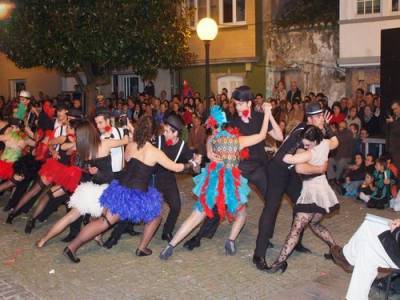Carnival is known in Galician as Entroido, meaning Lent’s "entry”, a time of subversion and role changing. Finisterre’s is the Costa da Morte’s most important and traditional carnival: it was the first village in the area to reintroduce this celebration.
Finisterre carnival has its origins in the 20th century, when the doctor Desiderio Paz Figueroa started organizing parades of troupes or comparsas singing satiric songs about Finisterre’s daily life. During Franco’s dictatorship these performances were banned but nevertheless, the locals kept alive the tradition of dressing up. In the 1980’s the parades reappeared, parodying politicians and Finisterre’s neighbors, always preferring wit over vulgarity.
Parades, costumes, music, drama, excitement, sense of humor and retranca (irony) are the ingredients of Finisterre carnival, described by many as "the king of the Costa da Morte".
Every Carnival Saturday a costume parade is organized. On Tuesday, a troupe contest is organized and the first prize is awarded to the contestant showing more originality and effort. Until recently, the end of carnival was celebrated with a ceremony the following Saturday called "Entierro de la Sardina” (Burial of the Sardine), with the peculiarity that an octopus was buried, and then an octopus puppet was made and dressed up as the celebrity of the hour.
If you feel like enjoying a holiday with a lot of retranca, do not hesitate to visit Finisterre carnival. But remember to bring the proper attire!
